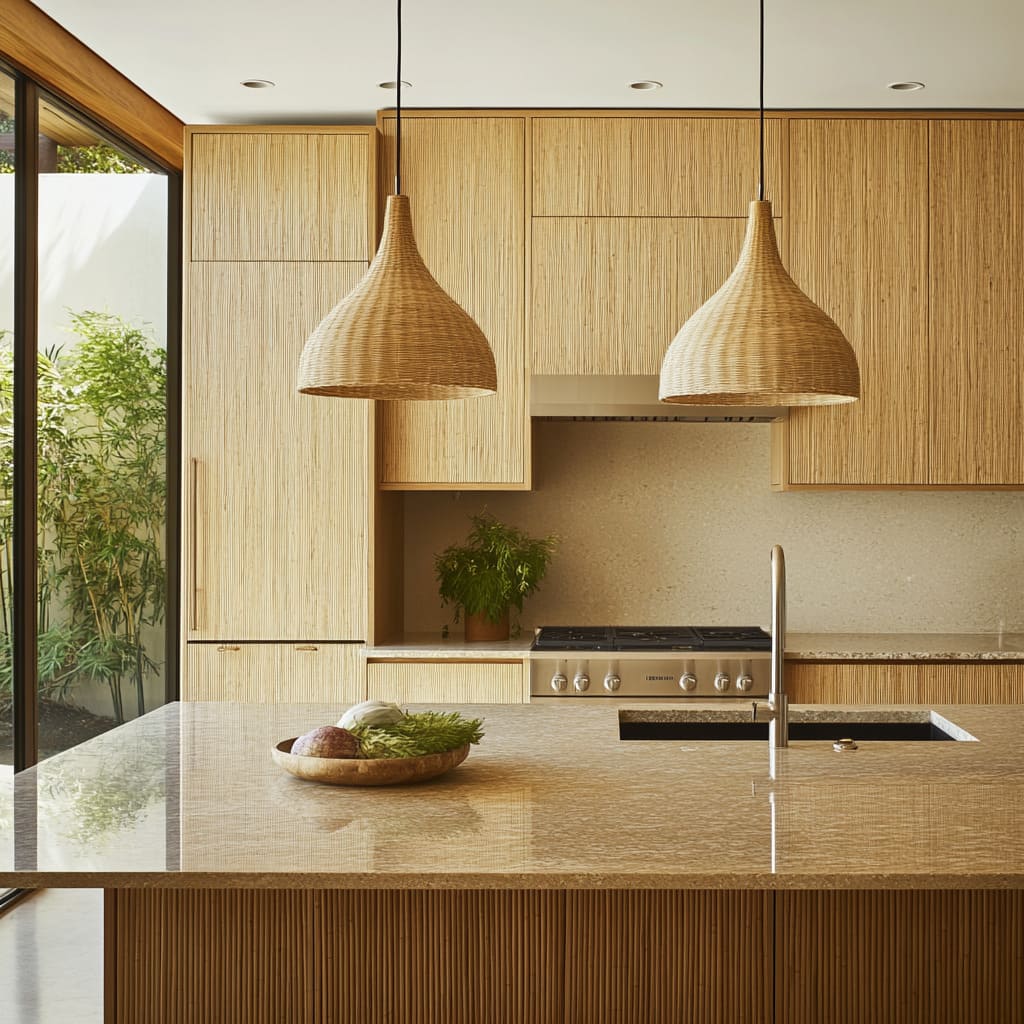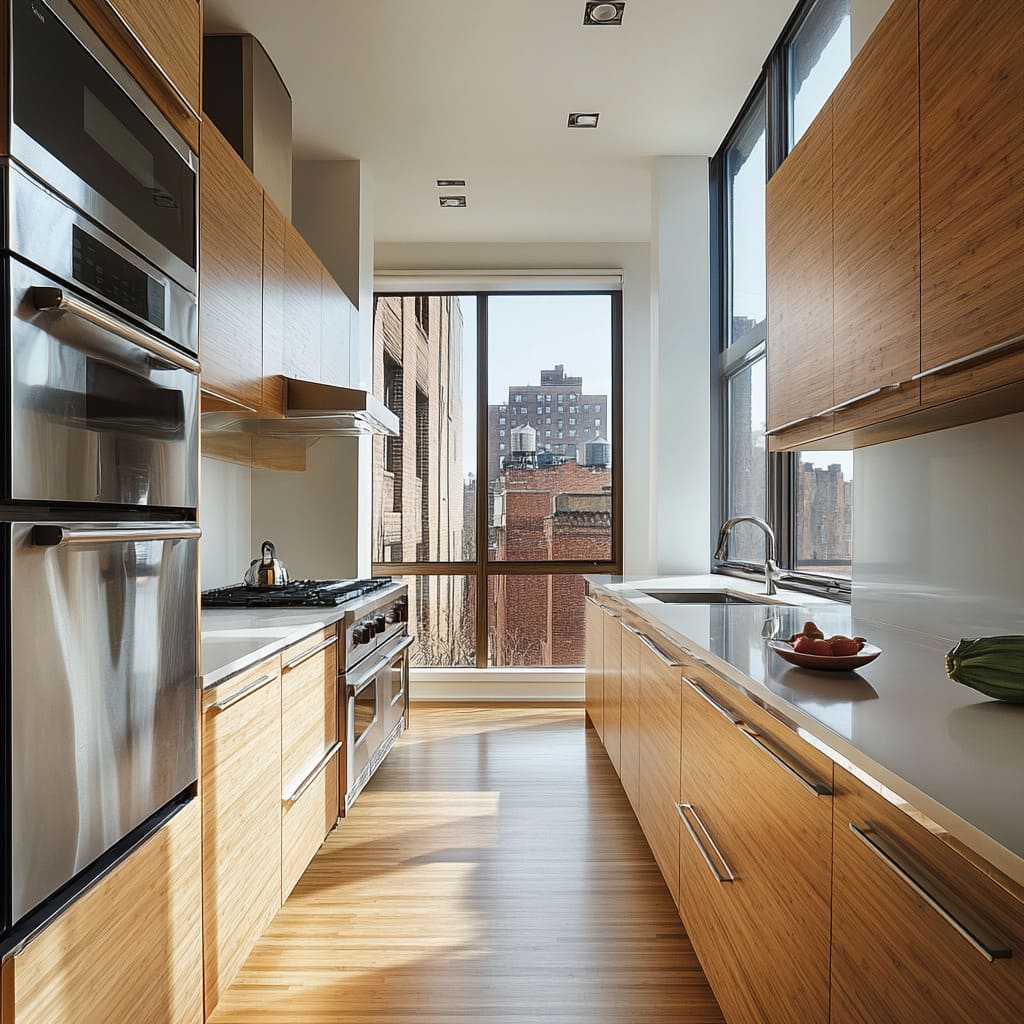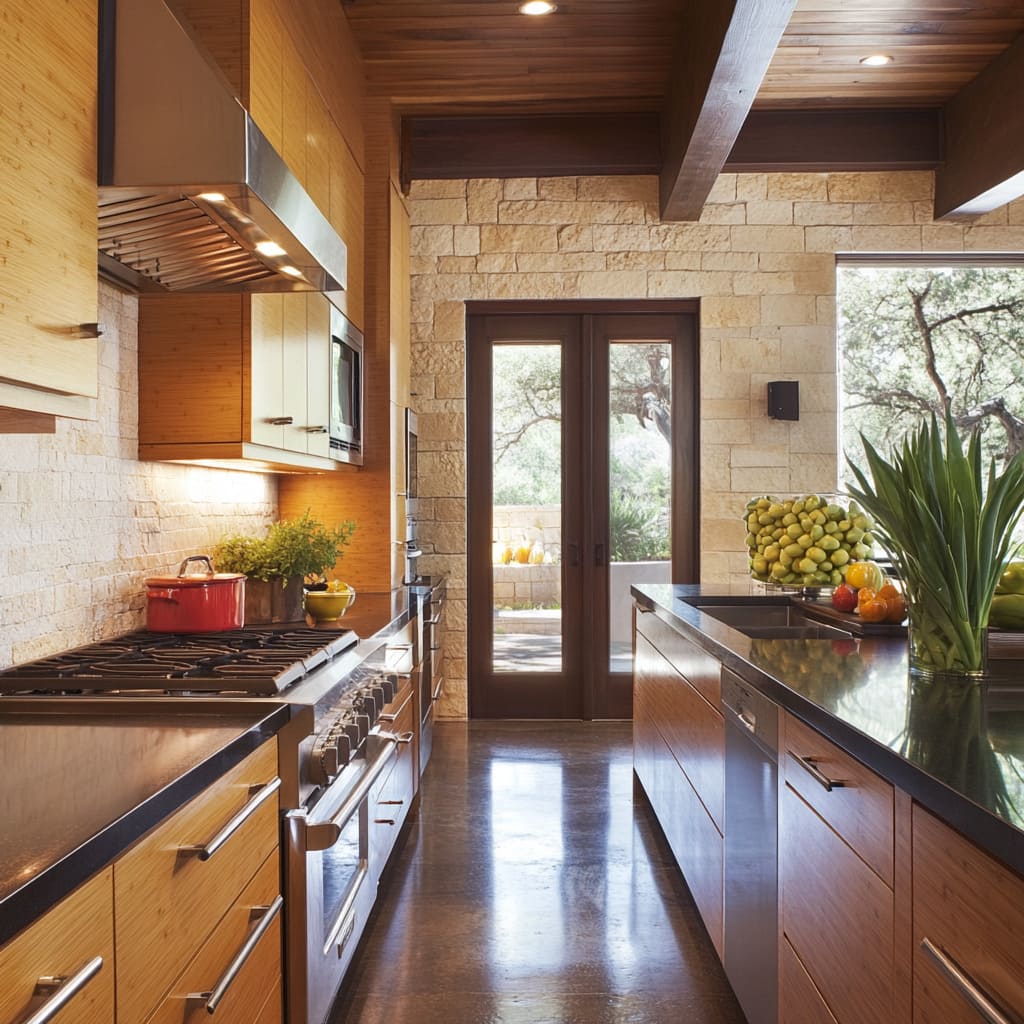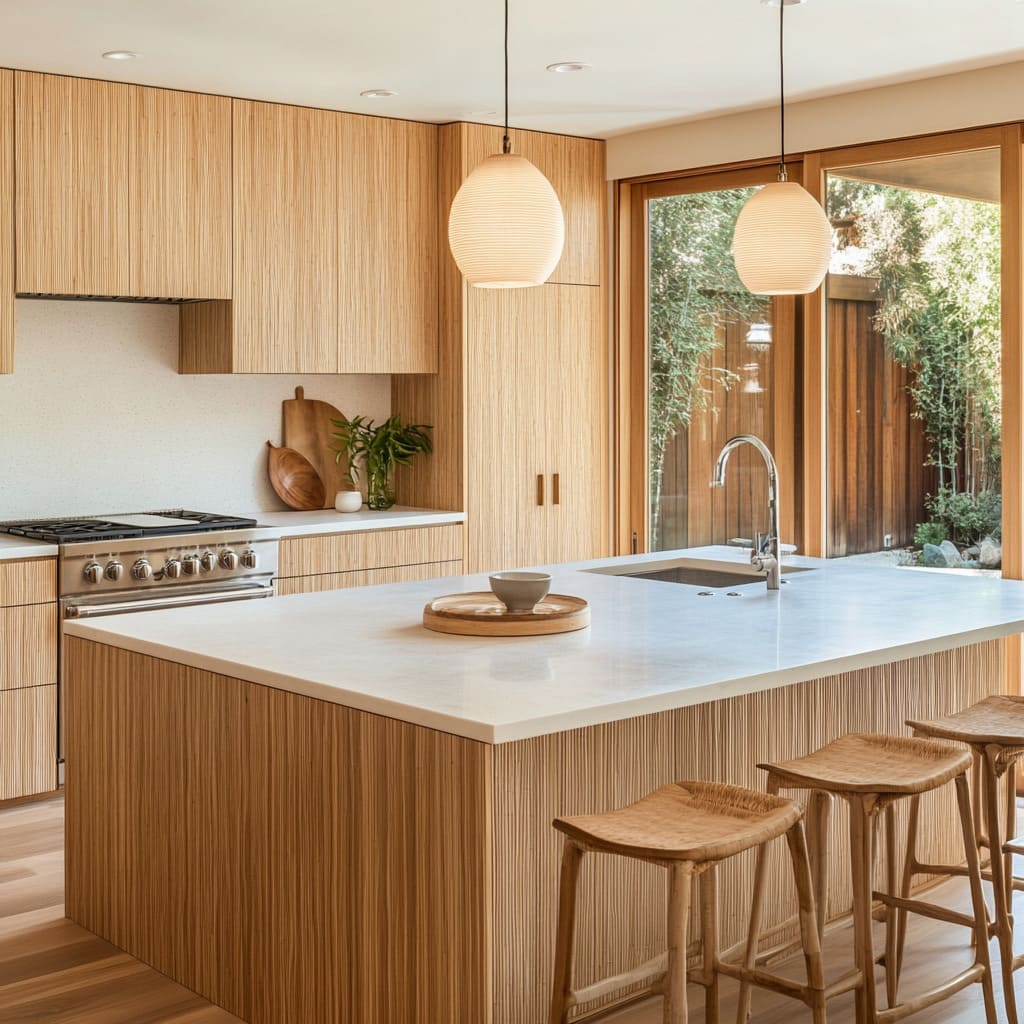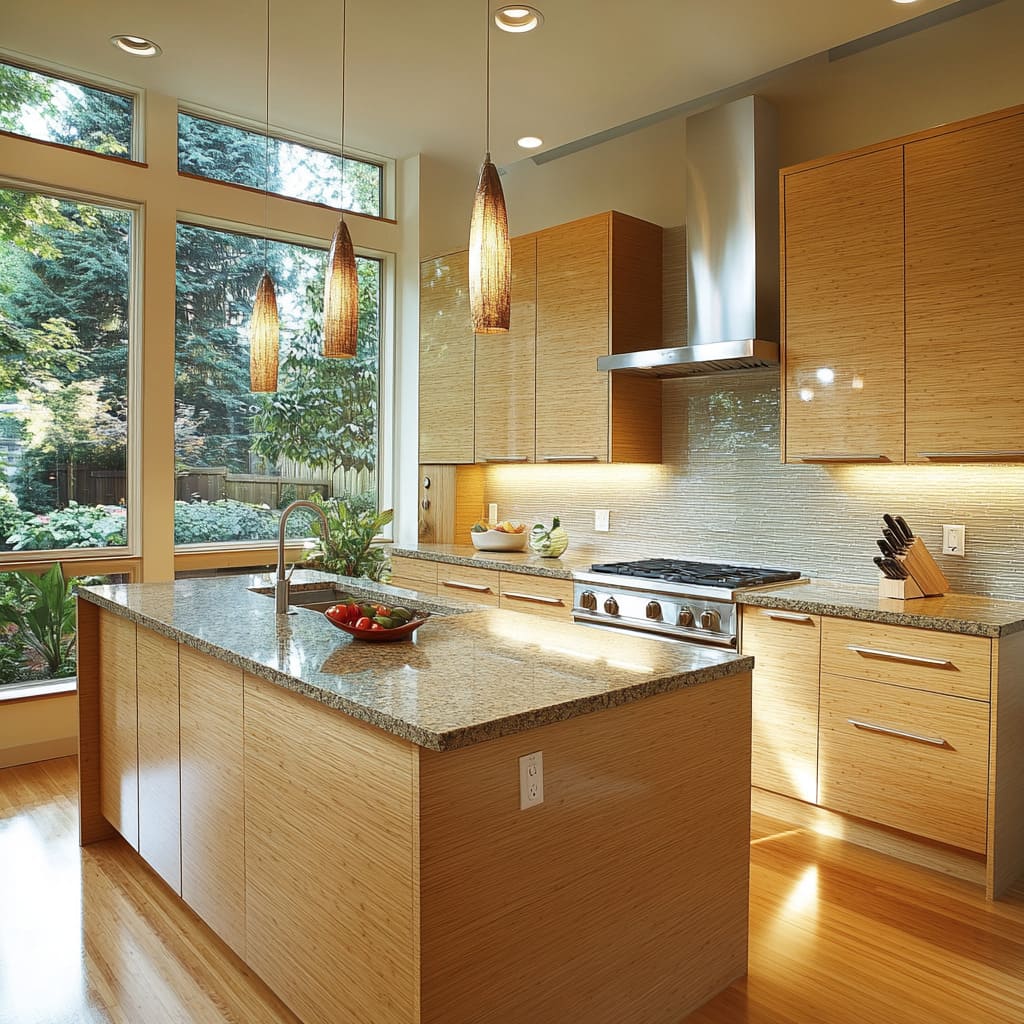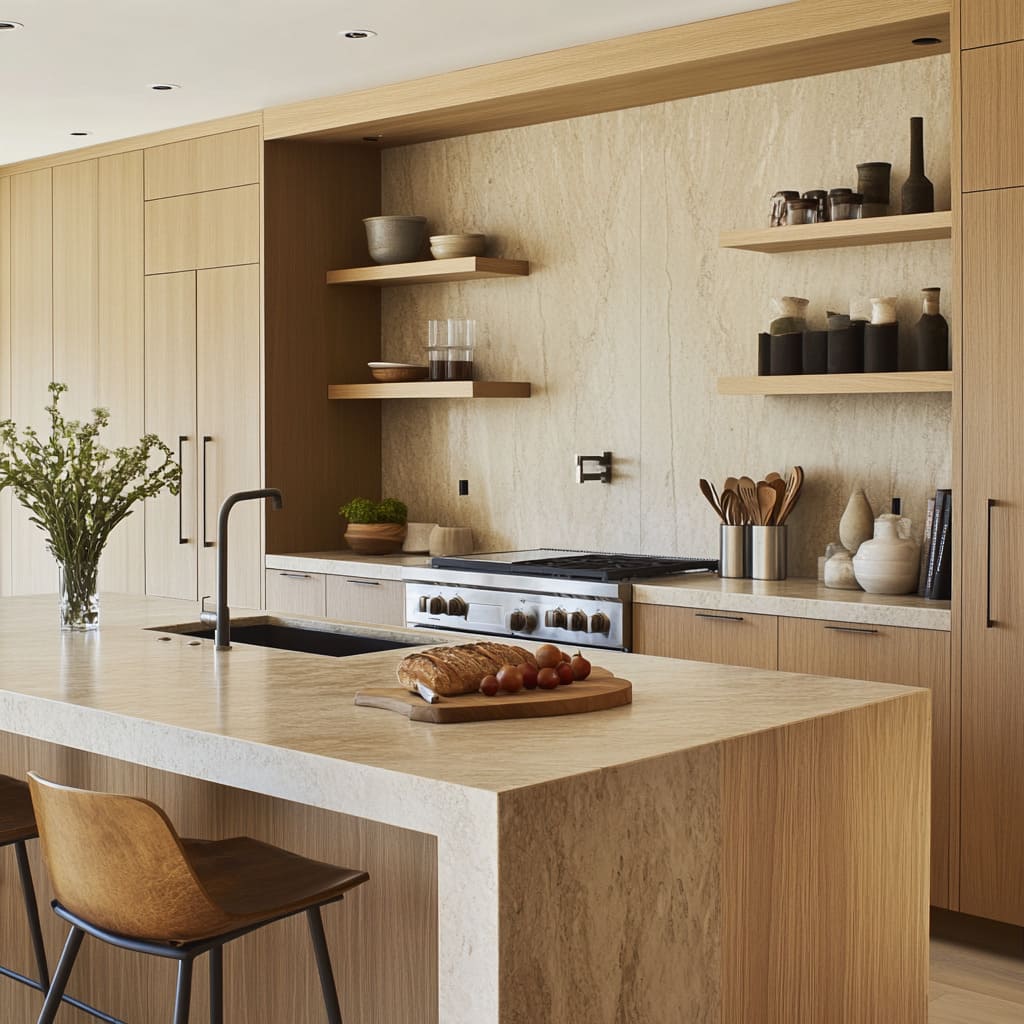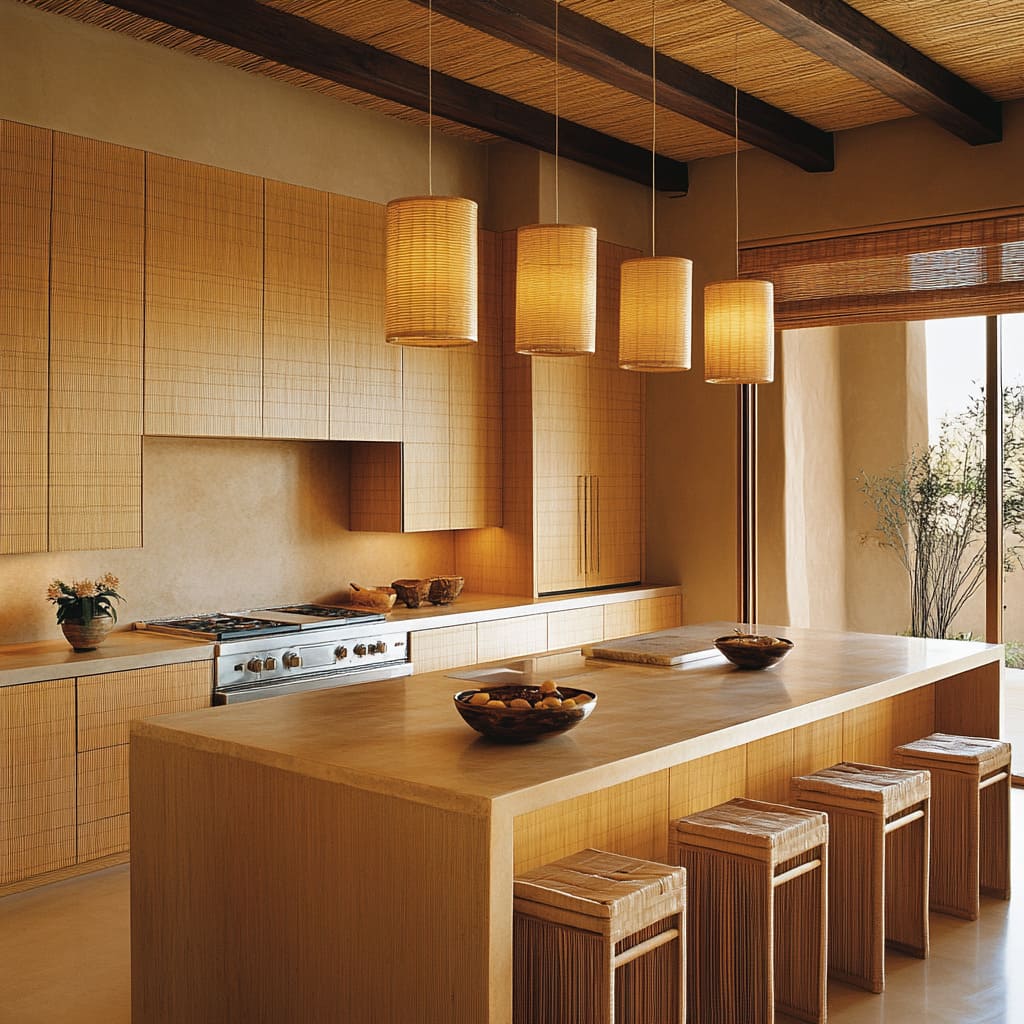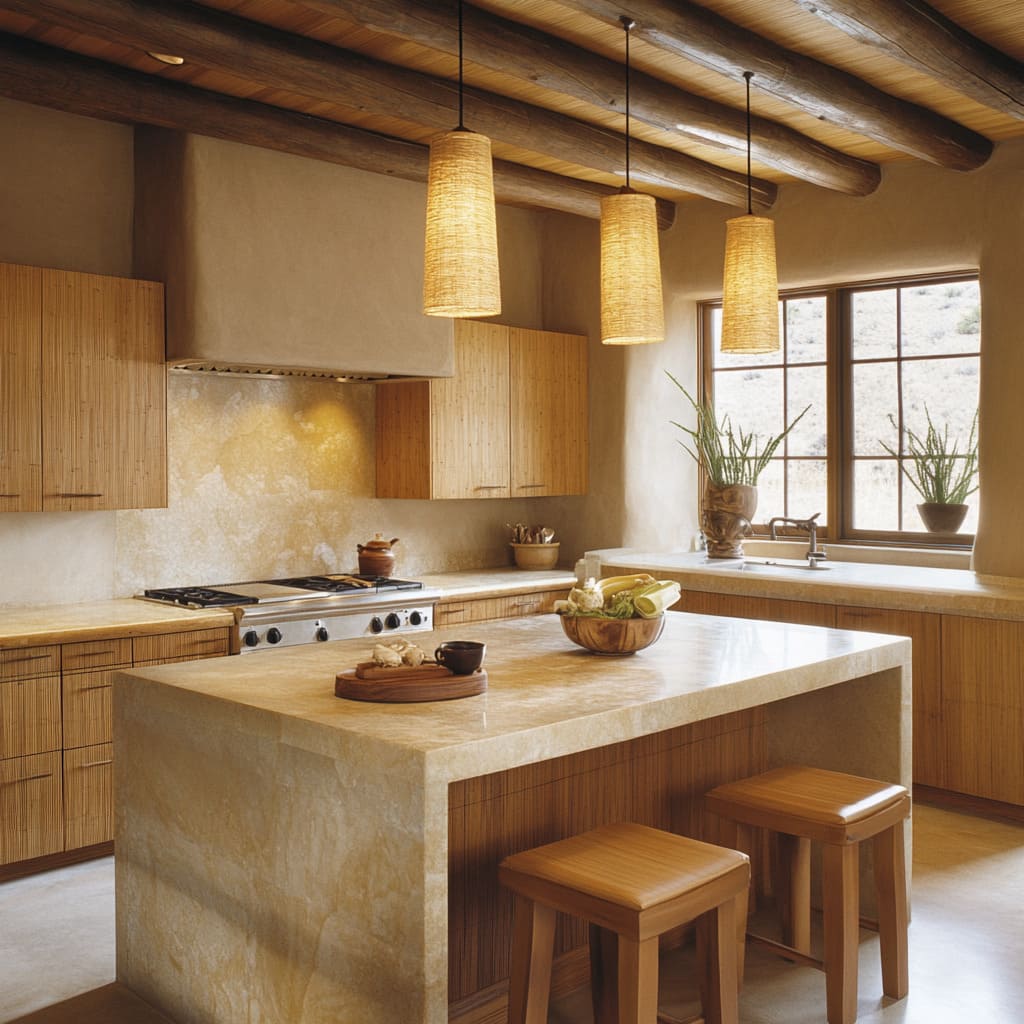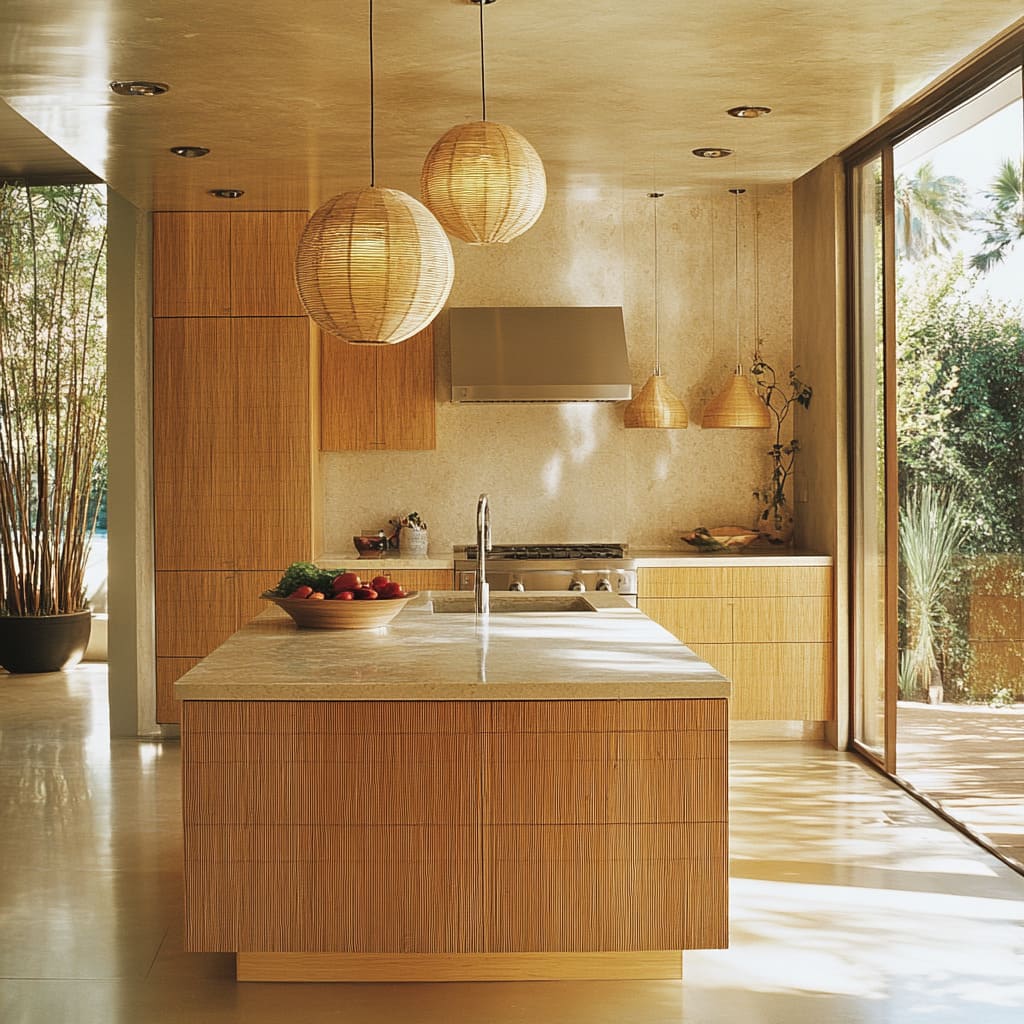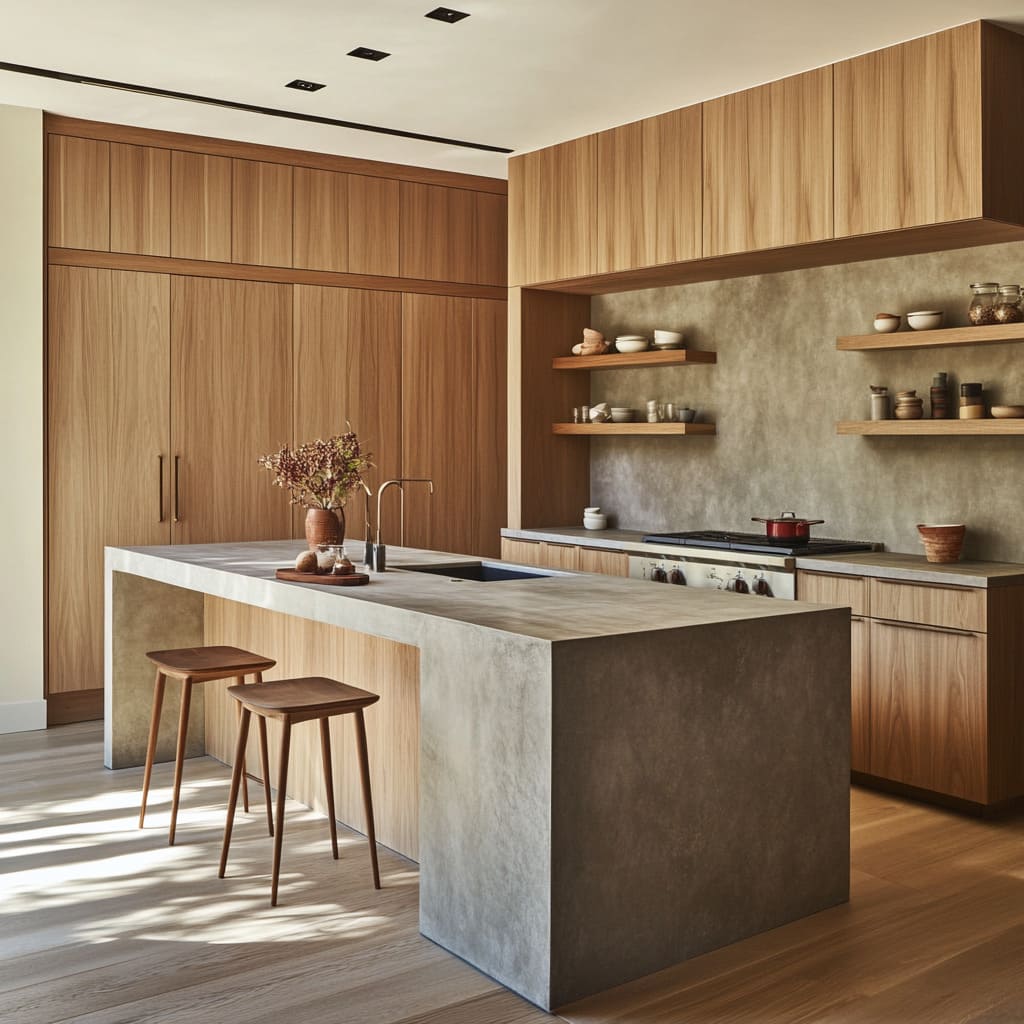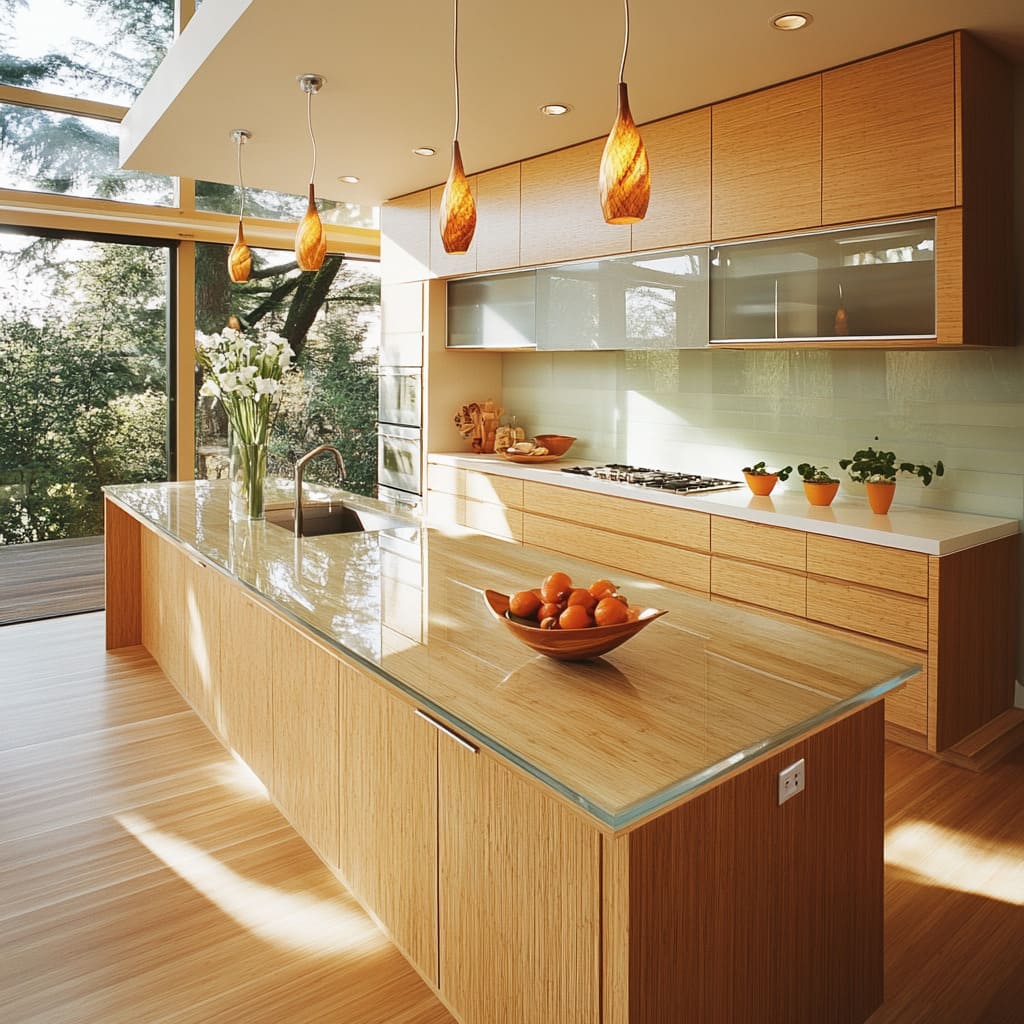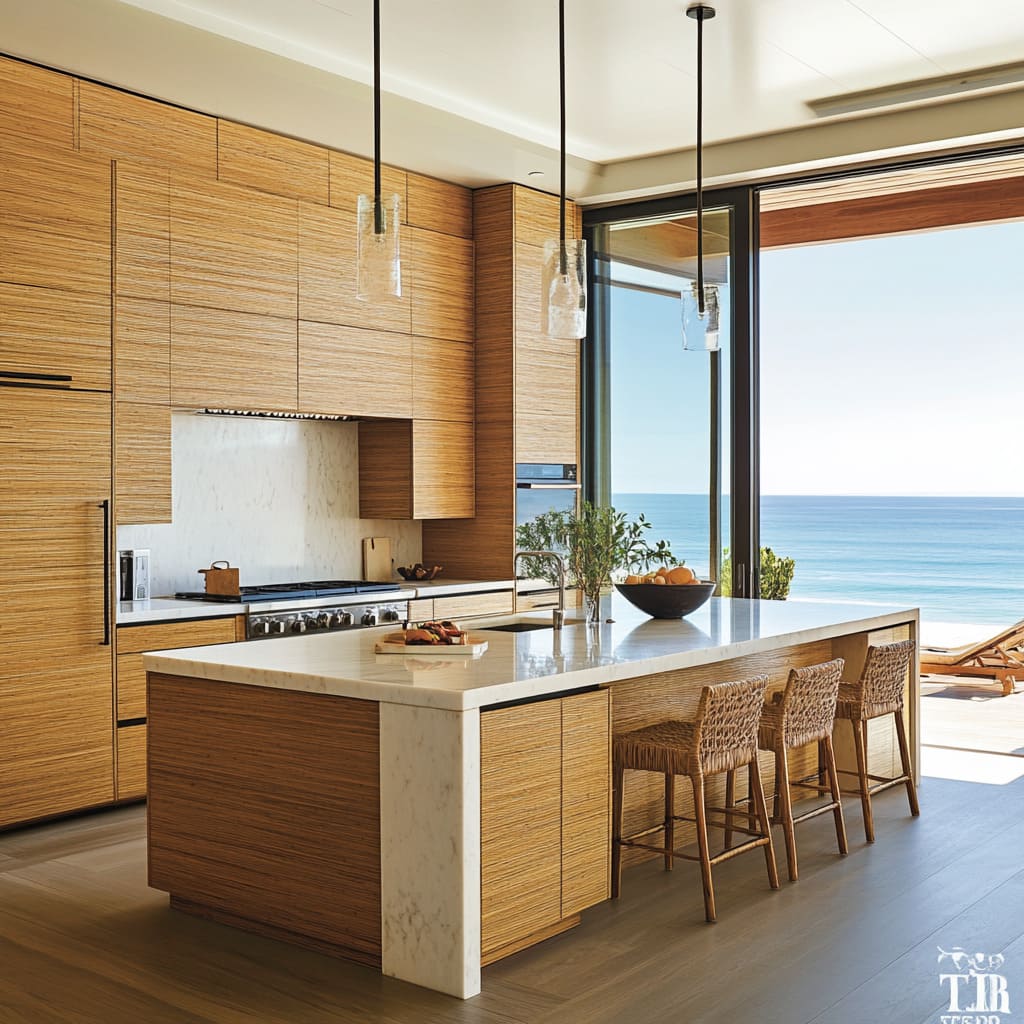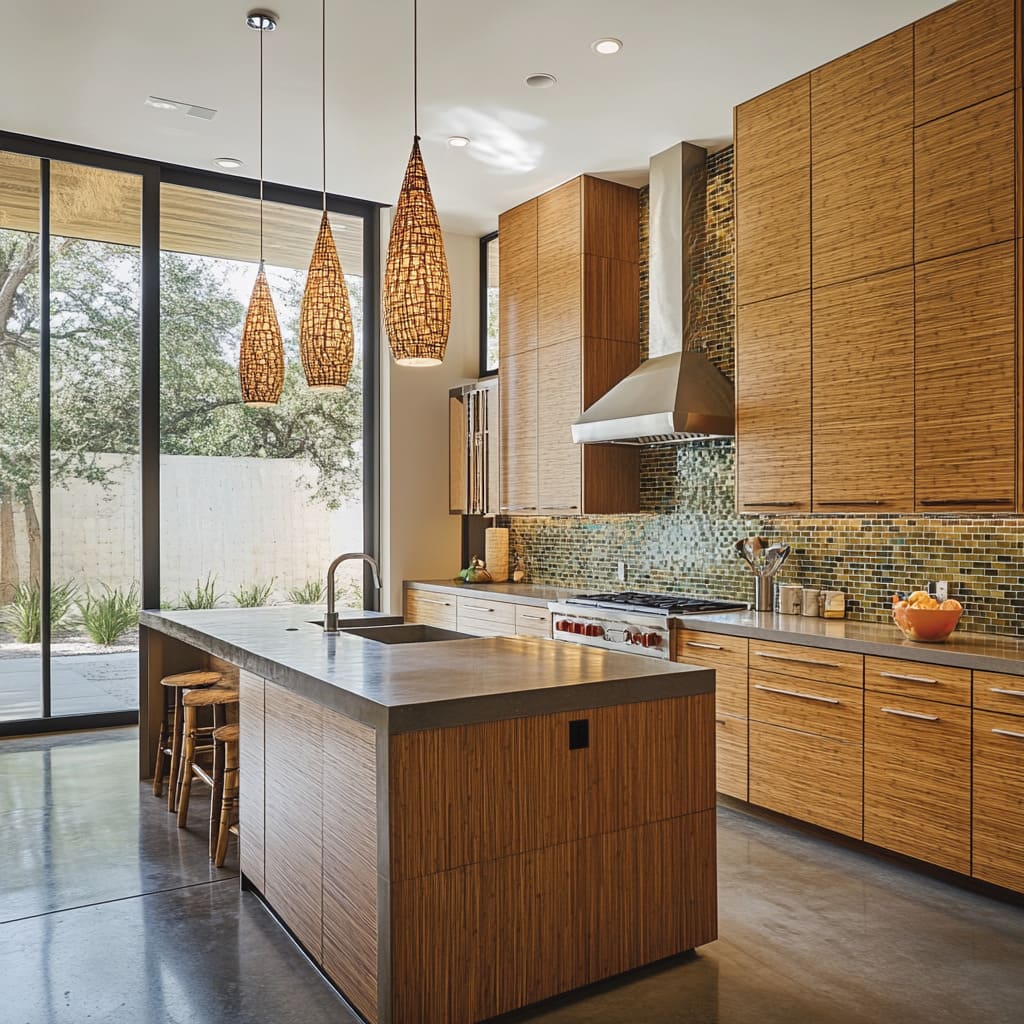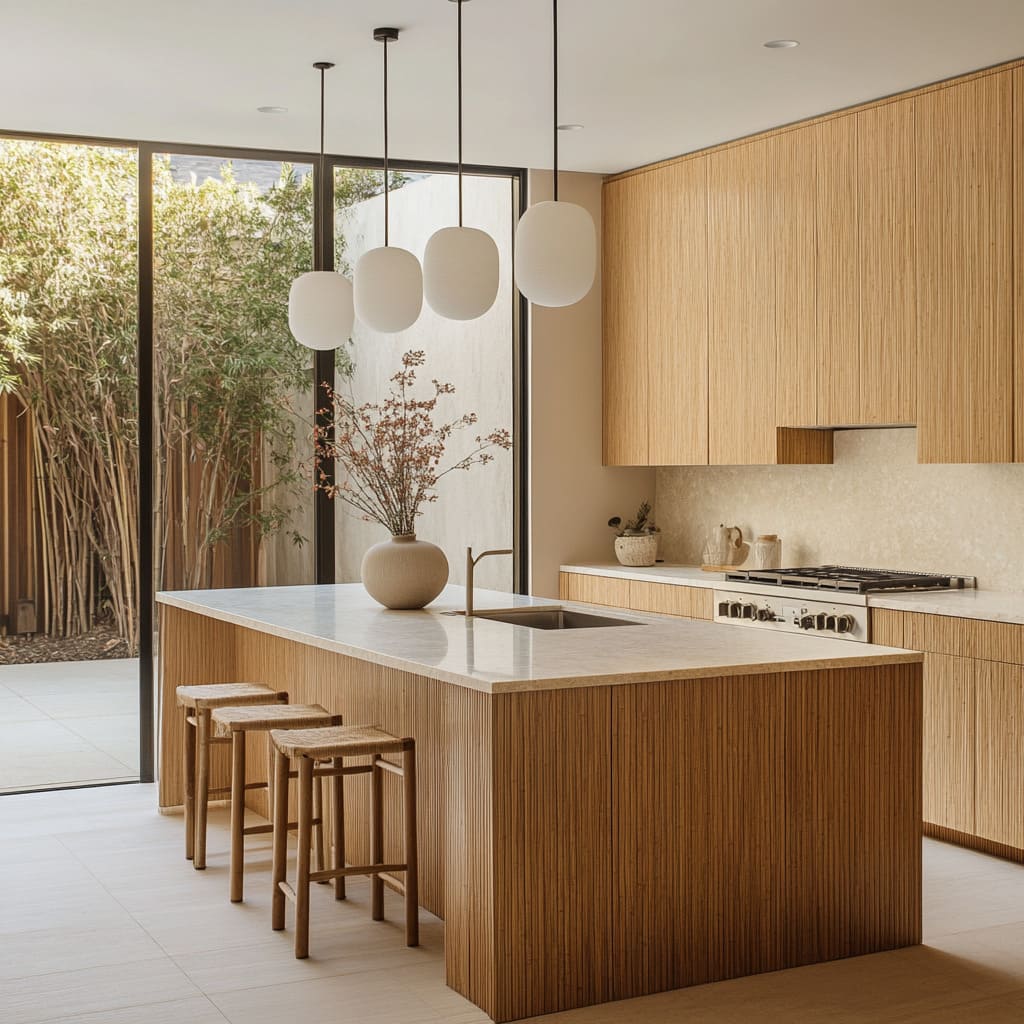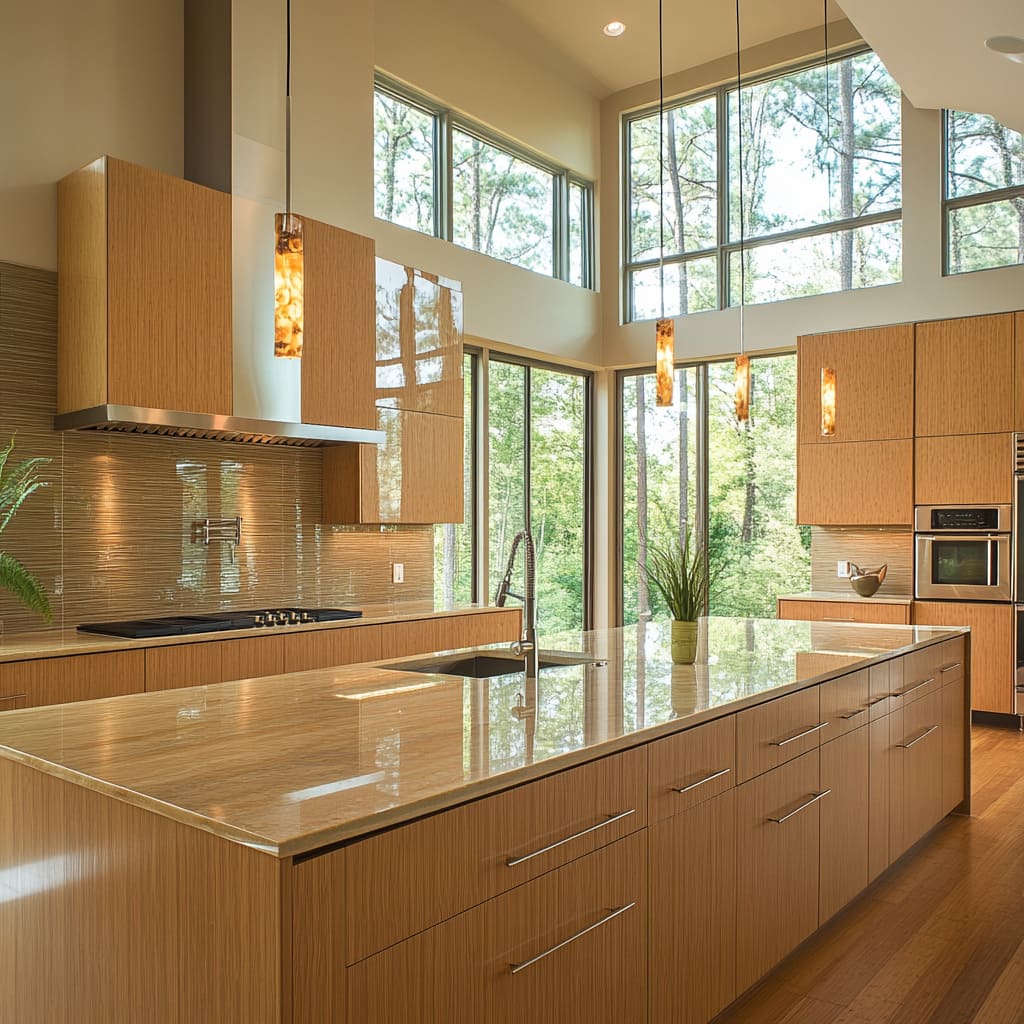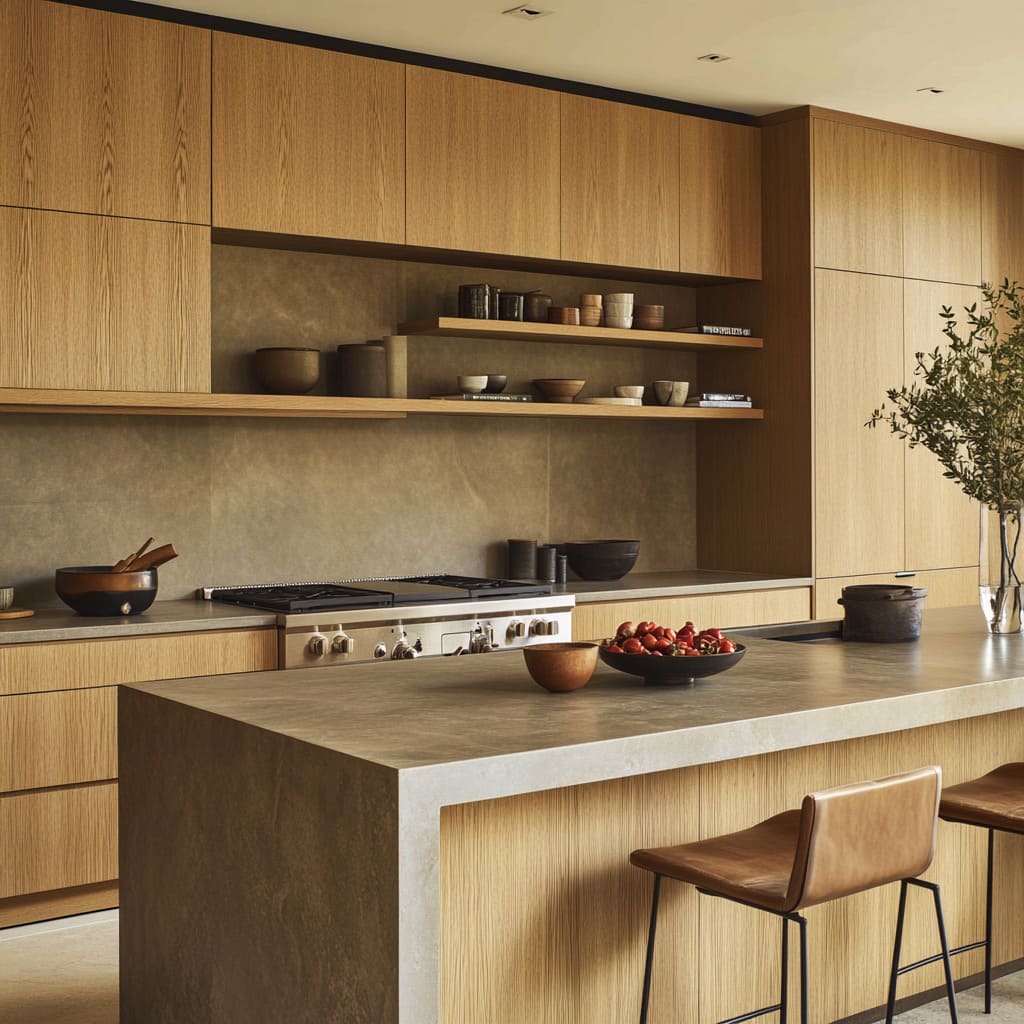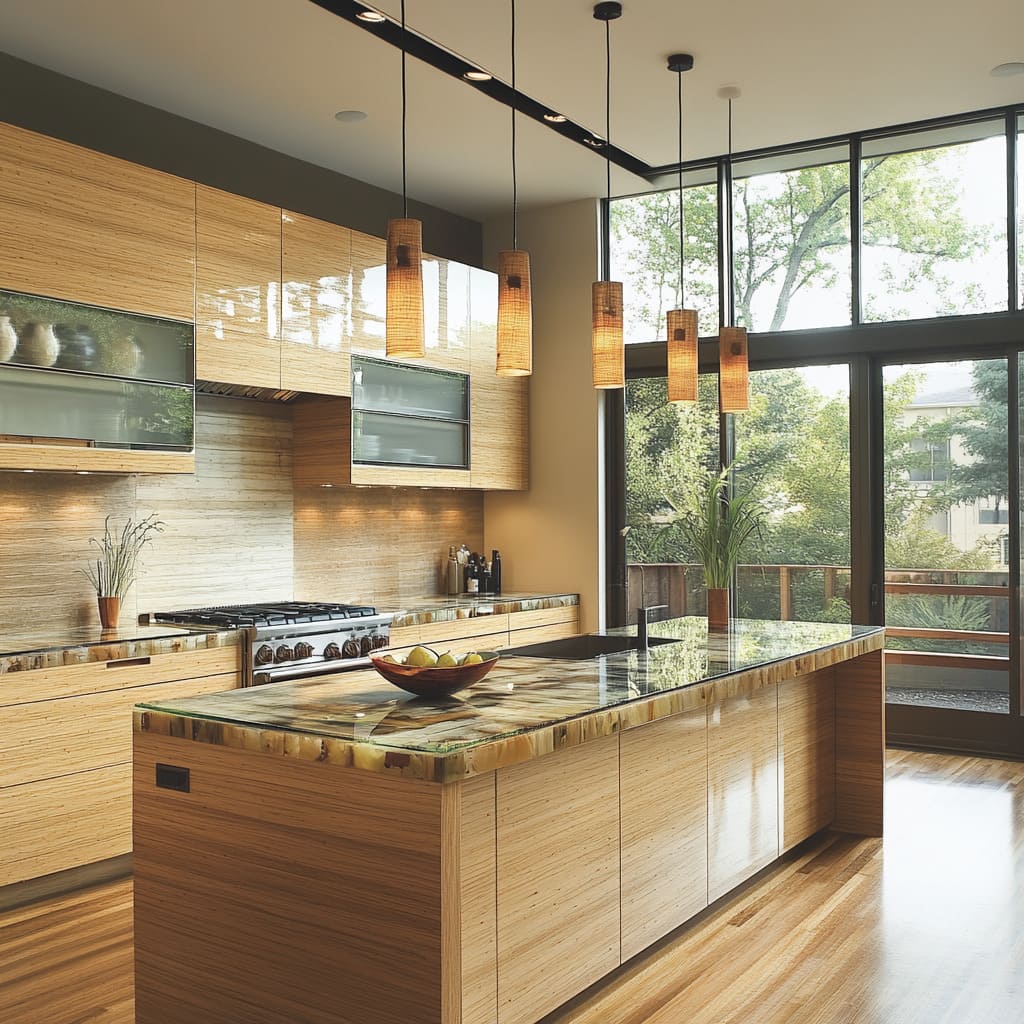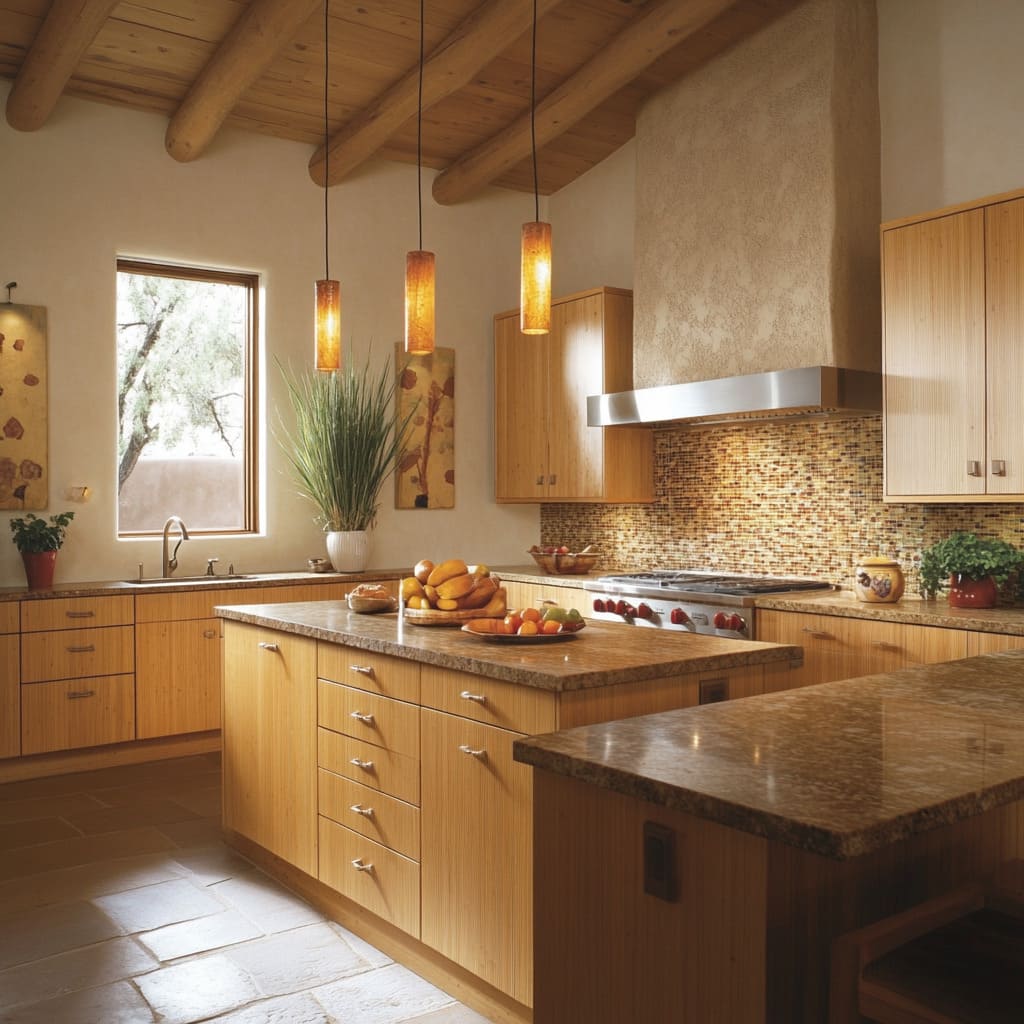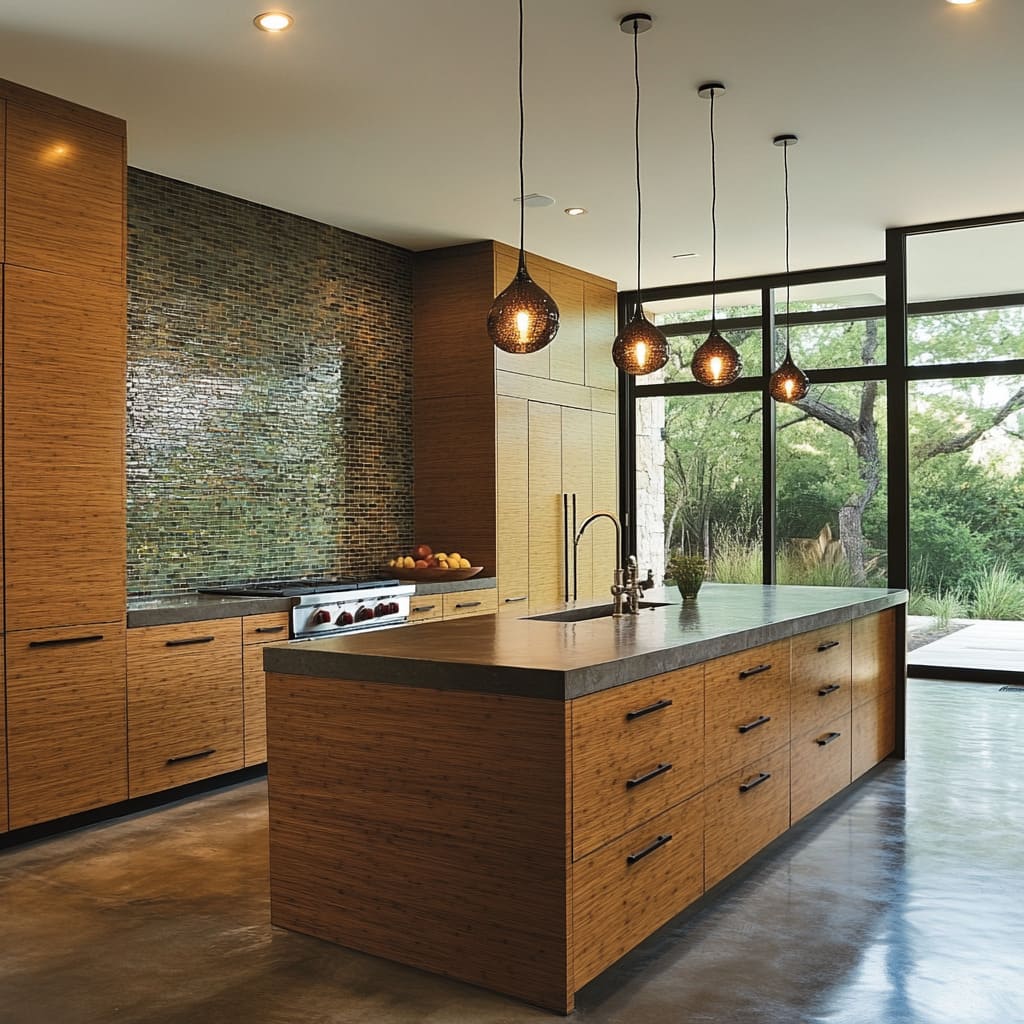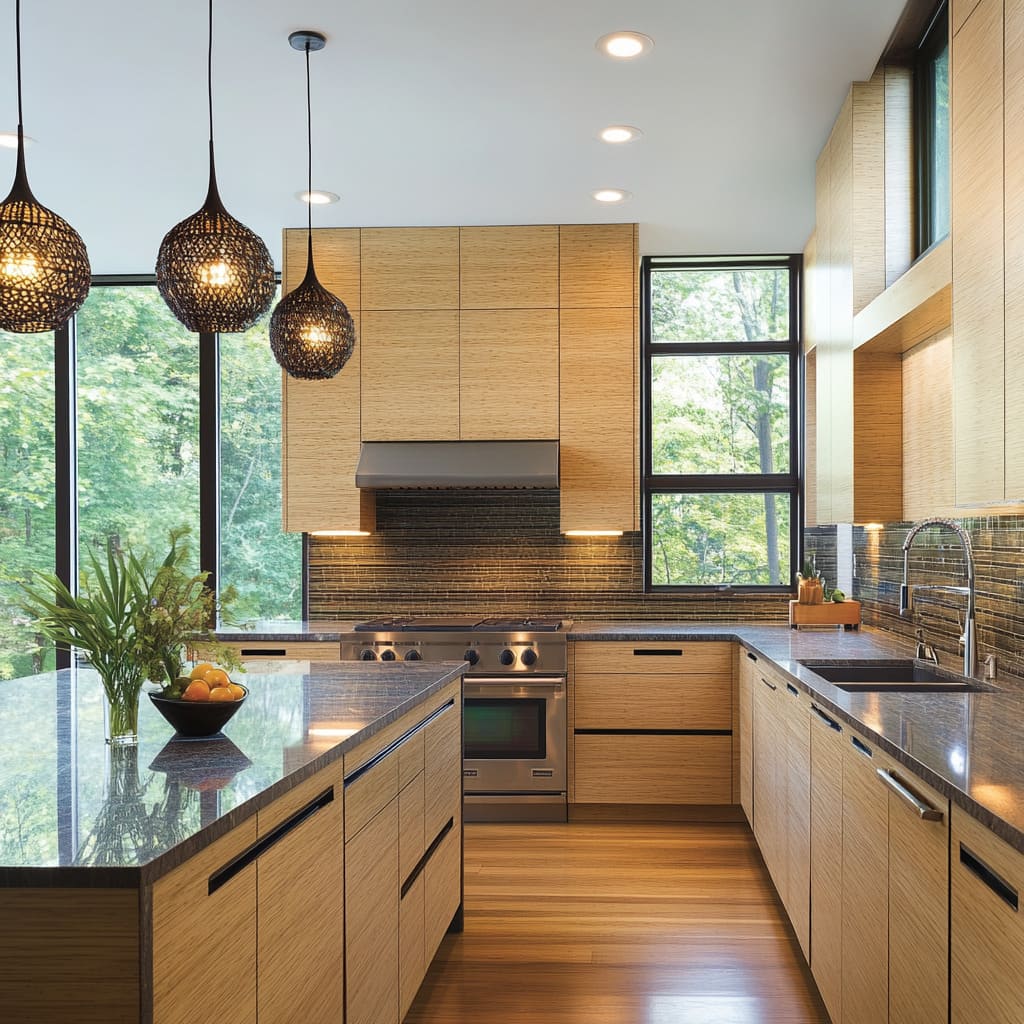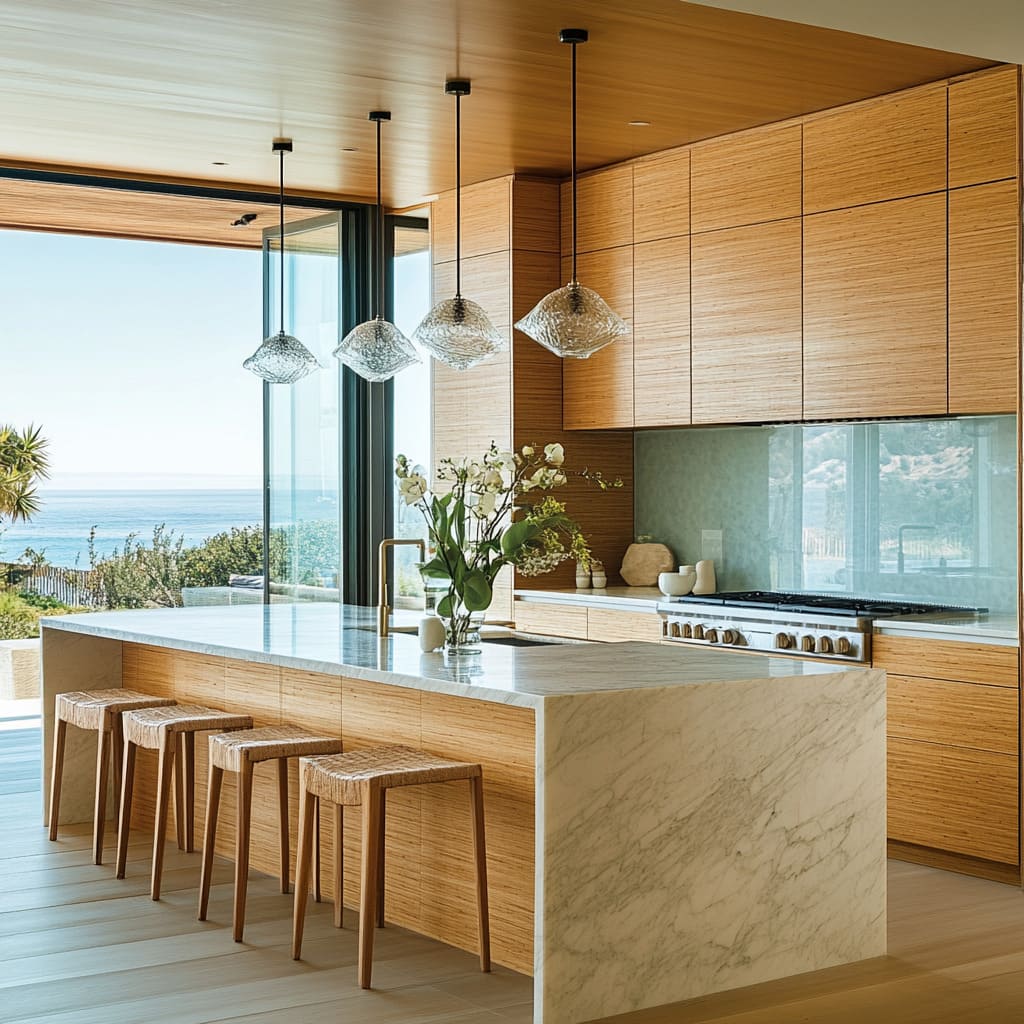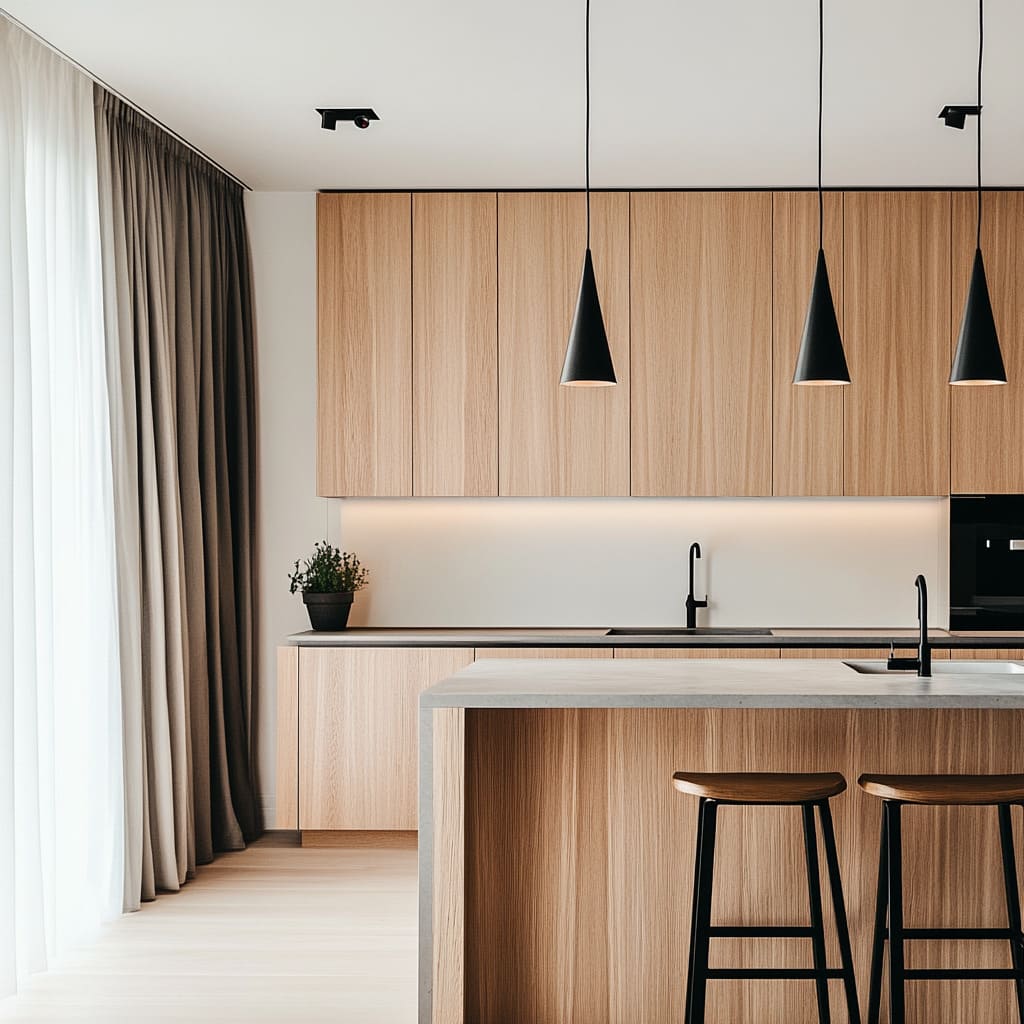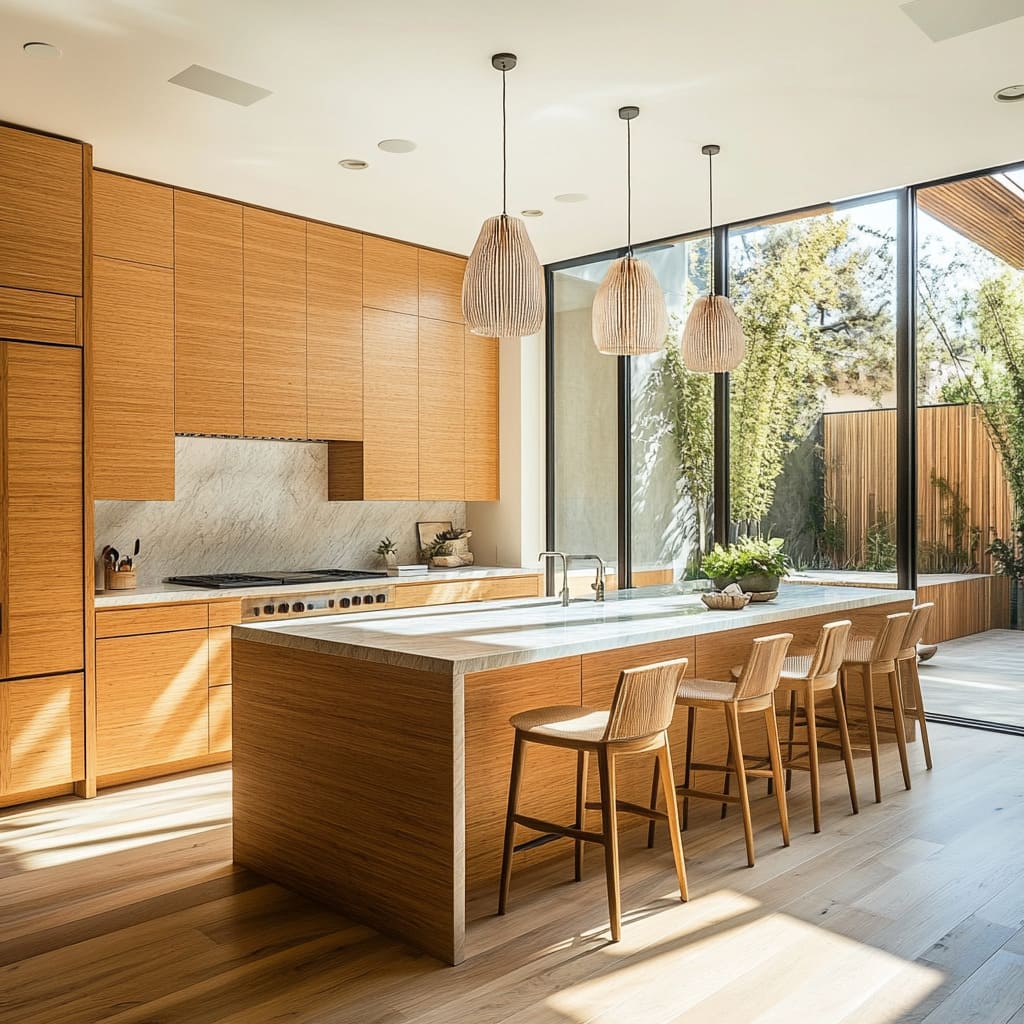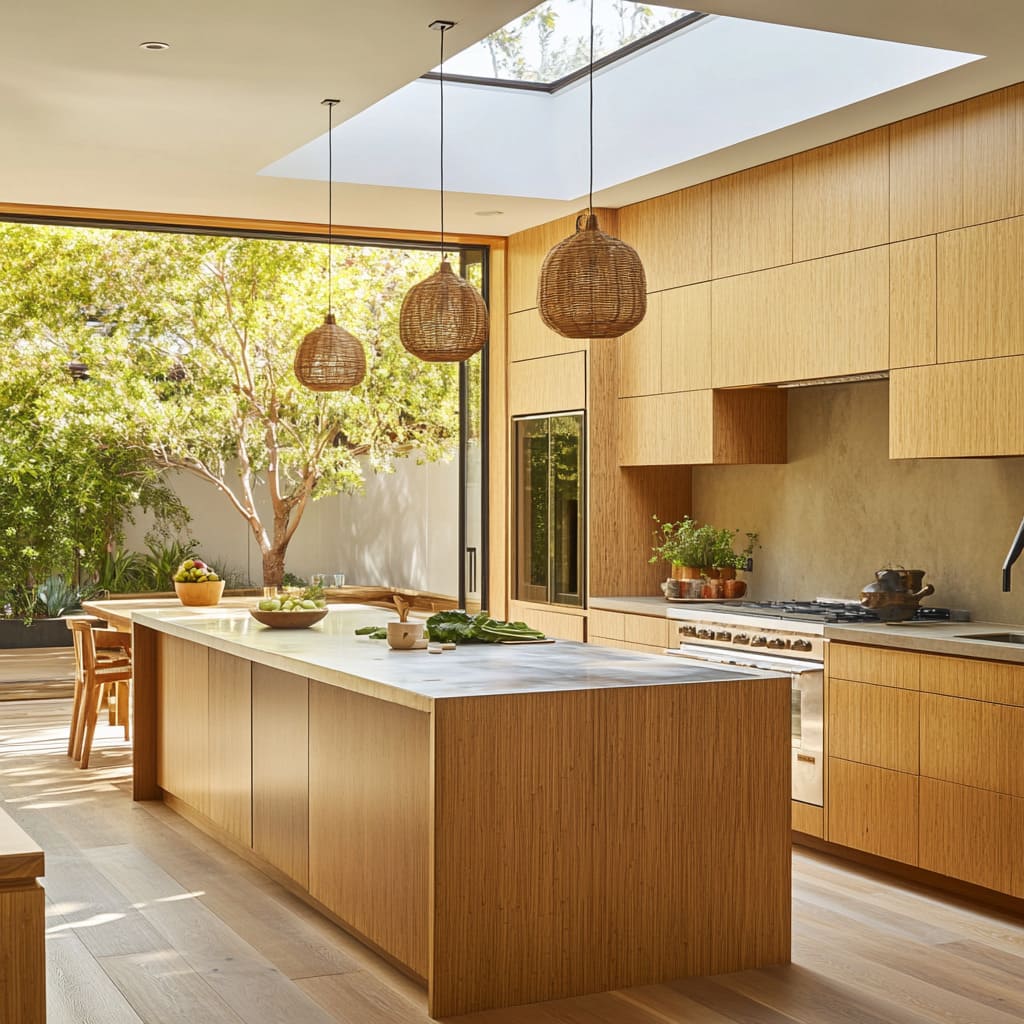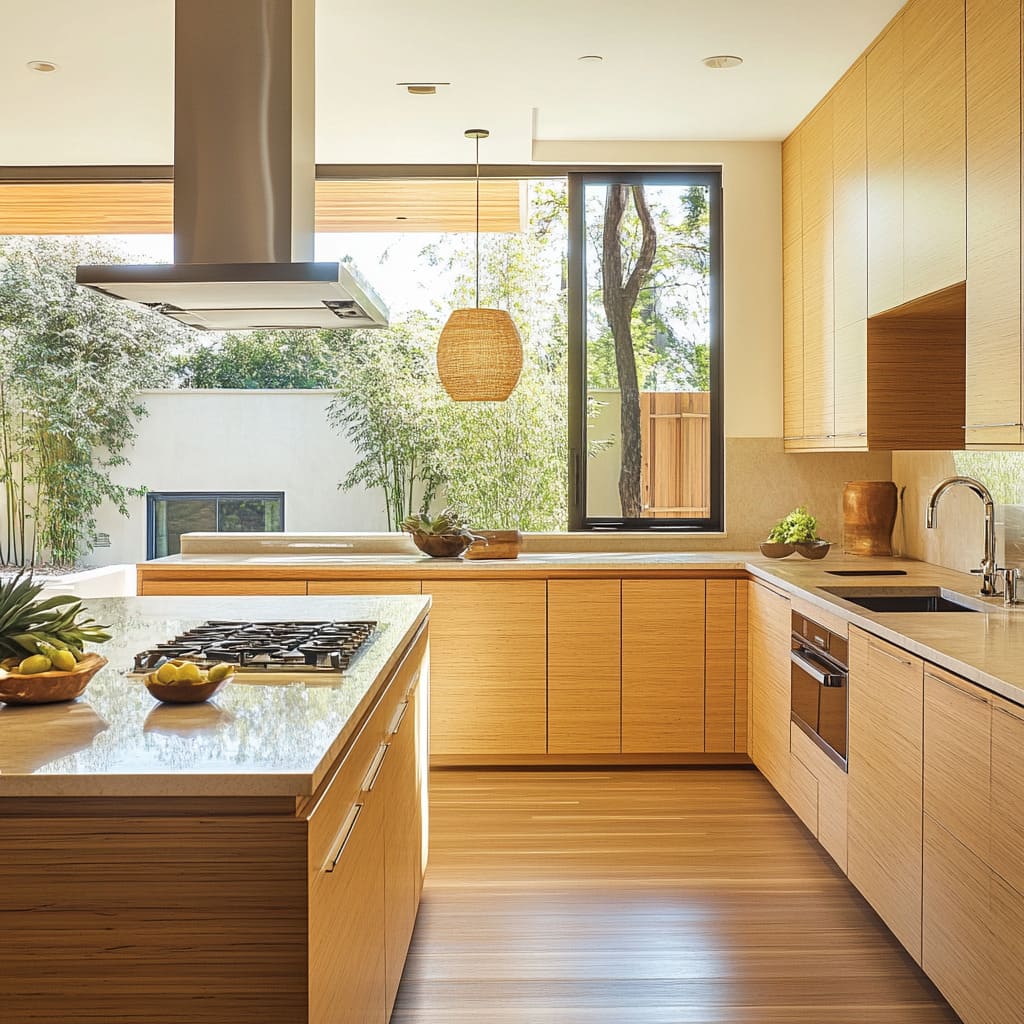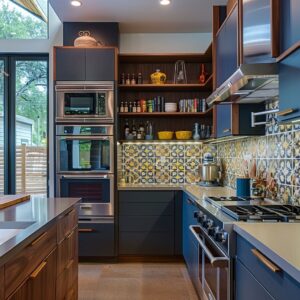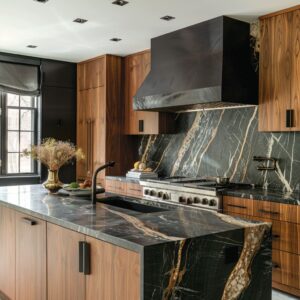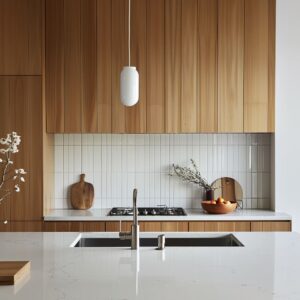In recent years, there has been a growing emphasis on sustainable living, with homeowners seeking materials that are both eco-friendly and stylish for their homes. One material that has been gaining considerable attention in the world of interior design, particularly for kitchen spaces, is bamboo.
As a renewable resource, bamboo is fast becoming a popular choice for those looking to create a kitchen that is both beautiful and environmentally responsible
Bamboo offers several compelling reasons for its increasing popularity in kitchen design. It combines the durability and aesthetic qualities of traditional hardwoods with the added benefit of being a sustainable and eco-conscious option.
From its natural beauty and warmth to its versatility across various design styles, bamboo stands out as a top choice for modern kitchens. Whether used in cabinetry, flooring, or other design elements, bamboo brings a unique blend of function and form that is hard to match.
This article will delve into the various aspects that make bamboo the ultimate material for a stunning and sustainable kitchen. We will explore its sustainability, visual appeal, adaptability to different design aesthetics, and its practicality in everyday use, particularly focusing on its application in bamboo kitchen cabinets
The Sustainability of Bamboo
Rapid Growth and Renewability
One of the most significant advantages of bamboo is its rapid growth rate. Unlike traditional hardwoods that can take decades to mature, bamboo reaches full maturity in just three to five years.
This fast growth cycle makes bamboo a highly renewable resource, as it can be harvested frequently without depleting the plant population. Furthermore, bamboo’s root system remains intact after harvesting, allowing it to regenerate naturally without the need for replanting.
This regenerative capability means that bamboo has a much lower environmental impact compared to conventional hardwoods. By choosing bamboo kitchen design, homeowners contribute to the reduction of deforestation, as fewer trees need to be cut down to meet demand.
Additionally, the cultivation of bamboo requires minimal pesticides and fertilizers, further enhancing its environmental benefits
Eco-Friendly Production Process
Bamboo’s sustainability extends beyond its growth characteristics to the way it is processed into building materials. The production of bamboo kitchen cabinets involves harvesting the stalks at their peak maturity, followed by a process of cutting, treating, and pressing the bamboo into panels.
This production process consumes significantly less energy compared to the processing of traditional hardwoods, resulting in a lower carbon footprint. Moreover, many bamboo products are manufactured using non-toxic adhesives and finishes, making them safer for indoor air quality and reducing the release of harmful chemicals into the environment.
By opting for bamboo kitchen materials, homeowners can create a space that is not only sustainable but also healthier for their family
Aesthetic Appeal of Bamboo in Kitchen Design
Natural Beauty and Warmth
Bamboo’s natural beauty is one of its most appealing features. The material has a unique grain pattern, with fine, vertical lines that add a subtle texture to any space.
The golden hues of bamboo exude warmth, making it an excellent choice for creating a cozy and inviting kitchen environment. Whether used in bamboo kitchen cabinets or as flooring, bamboo’s aesthetic qualities contribute to a space that feels organic and welcoming.
The warm tones of bamboo complement a wide range of color palettes, from neutral shades to bold accents, allowing it to fit seamlessly into various kitchen designs. Its natural elegance makes bamboo an ideal material for both modern and rustic kitchen styles, providing a timeless appeal that enhances the overall atmosphere of the home
Versatility in Design Styles
Bamboo is incredibly versatile, lending itself to a variety of design styles. In Japandi-inspired kitchens, bamboo’s clean lines and natural tones perfectly align with the minimalist and functional aesthetics of this design approach.
The use of bamboo in a kitchen creates a space that is both serene and functional, emphasizing simplicity and a connection to nature. In more contemporary settings, bamboo’s sleek appearance pairs well with modern fixtures and appliances, offering a chic yet sustainable alternative to traditional materials.
The adaptability of bamboo is also evident in kitchens with a Scandinavian influence, where the light wood tones and minimalist design of bamboo cabinets enhance the overall sense of space and light
Practicality and Durability of Bamboo in Kitchen Settings
Strength and Resilience
Bamboo is often praised for its impressive durability, making it a practical choice for kitchen settings where wear and tear are inevitable. Despite its lightweight appearance, bamboo is incredibly strong, with a tensile strength that rivals or even surpasses some hardwoods.
This makes it particularly suitable for busy kitchens where the materials must withstand daily use and frequent cleaning
One of the standout features of bamboo is its resistance to warping and cracking, conditions that can easily affect other types of wood, especially in environments with fluctuating temperatures and humidity levels. The natural structure of bamboo fibers is tightly packed, providing it with inherent stability.
This quality ensures that bamboo kitchen cabinets remain structurally sound and visually appealing over time, even under the demands of heavy use. Bamboo’s resilience also extends to its ability to handle impacts and minor abrasions, which are common in active kitchens.
Whether used for countertops, flooring, or cabinetry, bamboo holds up well under pressure, maintaining its form and function longer than many other materials. This durability makes bamboo an excellent investment for those looking to create a sustainable kitchen that doesn’t sacrifice practicality for aesthetics
Maintenance and Longevity
Maintaining bamboo surfaces is relatively straightforward, adding to its practicality in a kitchen environment. Regular cleaning with a mild detergent and a damp cloth is typically all that’s needed to keep bamboo looking its best.
Unlike some other natural materials, bamboo doesn’t require special treatments or finishes to maintain its appearance, making it a low-maintenance option for homeowners
Bamboo is also naturally resistant to stains and spills, a crucial characteristic in any kitchen. The material’s tight grain structure prevents liquids from seeping in easily, reducing the risk of permanent stains.
This resistance makes bamboo particularly suitable for countertops and flooring, where accidental spills are more likely to occur. To preserve the longevity of bamboo cabinets, it’s recommended to avoid exposure to excessive moisture.
While bamboo is more water-resistant than many types of wood, prolonged contact with water can still cause damage over time. Simple precautions, such as wiping up spills promptly and using mats under dish racks, can help maintain the integrity of bamboo surfaces.
By following these maintenance tips, homeowners can ensure that their bamboo kitchen elements continue to provide both beauty and functionality for many years. The ease of upkeep, combined with bamboo’s natural durability, makes it a practical choice for those seeking an eco-friendly kitchen that’s designed to last
WCurious about how your budget can transform your kitchen into an eco-friendly space?
Simply enter your budget and kitchen details below to receive an instant response on how you can achieve a sustainable remodel.
[budget_renovation_calculator]
Design Flexibility and Customization with Bamboo
Cabinetry Design Options
Bamboo offers a wide range of design options, making it an adaptable material for various kitchen styles. Whether you prefer a modern, minimalist look or something more traditional, bamboo can be crafted to suit your taste.
One of the most popular applications is in bamboo kitchen cabinets, where the material’s smooth texture and warm tones add a welcoming feel to the space
Flat-panel bamboo cabinet doors are a common choice for contemporary kitchens, providing a sleek and clean appearance that complements modern appliances and fixtures. For those looking for more texture or detail, bamboo can also be arranged in intricate patterns, such as horizontal or vertical strips, creating a unique and eye-catching design.
The ability to customize bamboo cabinetry allows homeowners to achieve their desired aesthetic while enjoying the benefits of a sustainable material
In addition to its design versatility, bamboo can be finished in various stains and colors, further expanding the customization possibilities. Whether you want to enhance the natural golden hue of bamboo or apply a darker stain to match your kitchen’s color scheme, bamboo can be tailored to meet your design preferences.
This flexibility makes bamboo a go-to option for those looking to explore sustainable kitchen design ideas without compromising on style
Integration with Other Materials
Bamboo’s natural beauty and versatility make it easy to pair with a variety of other materials, creating a balanced and cohesive kitchen design. In many modern kitchens, bamboo is combined with stainless steel appliances, where the warm tones of the bamboo contrast with the sleek, cool finish of the metal.
This combination not only looks sophisticated but also enhances the functionality of the kitchen
Stone countertops, such as granite or quartz, also pair well with bamboo cabinetry. The organic texture of bamboo complements the solid, smooth surfaces of stone, resulting in a harmonious blend that’s both aesthetically pleasing and practical.
The contrast between the two materials highlights the unique qualities of each, making the kitchen feel more dynamic and visually interesting. Glass elements, such as cabinet doors or backsplashes, can also be incorporated with bamboo to add a touch of lightness and transparency to the design.
The transparency of glass allows the natural beauty of bamboo to shine through while also providing a modern edge to the overall look
Examples of kitchens show how bamboo can be effectively integrated with other sustainable materials to create a kitchen that is both functional and visually appealing. By mixing bamboo with other luxurious or eco-friendly materials, homeowners can create a space that reflects their personal style while adhering to principles of sustainable design.
This combination of design flexibility and material integration makes bamboo an excellent choice for those looking to create a kitchen that is not only practical and durable but also adaptable to changing trends and personal tastes
Enhancing the Kitchen’s Ambiance with Bamboo
Lighting and Natural Elements
Bamboo’s natural beauty truly comes to life when paired with the right lighting. In kitchens designed with large windows and open layouts, natural light plays a crucial role in highlighting the warm, golden tones of bamboo.
The interplay between sunlight and bamboo surfaces enhances the grain and texture, creating a lively yet soothing atmosphere. Kitchens that incorporate extensive glazing or strategically placed skylights take full advantage of daylight, making the space feel open, airy, and inviting
In addition to natural light, the use of warm lighting fixtures can further enhance the ambiance of a kitchen with bamboo cabinets. Pendant lights with natural fiber shades, such as wicker or rattan, complement the organic feel of bamboo while providing a soft, welcoming glow.
These lights can be positioned above a kitchen island or dining area, casting a warm, ambient light that emphasizes the cozy and inviting nature of the space. The combination of bamboo and carefully selected lighting fixtures creates a harmonious environment that feels both sophisticated and comfortable.
Warm, dimmable LED lights installed under cabinets or inside bamboo cabinetry can add depth and dimension, subtly illuminating countertops and backsplash areas. This type of lighting not only serves a practical purpose but also enhances the overall aesthetic, making the kitchen a pleasant place to spend time, whether preparing meals or entertaining guests
Creating a Connection with Nature
Bamboo’s natural qualities make it an ideal material for kitchens that embrace biophilic design principles. Biophilic design focuses on creating spaces that connect inhabitants with nature, enhancing well-being and comfort.
In the context of a kitchen, using bamboo helps establish this connection by bringing elements of the natural world indoors. The organic texture and appearance of bamboo contribute to a calm and peaceful environment, perfect for modern living.
This sense of tranquility is further enhanced when bamboo is paired with other natural materials such as stone, wood, and greenery. For example, potted plants or herb gardens placed near bamboo surfaces not only add a splash of greenery but also reinforce the kitchen’s link to nature
Incorporating bamboo into the kitchen creates an atmosphere that feels grounded and nurturing. This connection to nature is not only aesthetically pleasing but also promotes a sense of well-being, making the kitchen a retreat from the stress of daily life.
The use of bamboo in sustainable kitchen design is a testament to the material’s ability to create spaces that are not only functional but also deeply connected to the natural world
Cost-Effectiveness and Value Addition
Affordable Luxury
Bamboo is often regarded as an affordable alternative to more traditional high-end materials like oak or walnut, offering a similar aesthetic at a lower cost. This affordability, combined with bamboo’s luxurious appearance, makes it an attractive option for homeowners looking to create an upscale kitchen without overspending.
Bamboo provides a high-quality finish that rivals more expensive woods, making it a smart choice for those who want to achieve a sophisticated look without compromising on budget
Investing in bamboo for kitchen design is not just a matter of immediate cost savings. The material’s durability and low maintenance requirements mean that it will continue to look beautiful and perform well for years, offering excellent long-term value.
This combination of affordability and longevity makes bamboo an appealing choice for those seeking to balance style, functionality, and budget in their kitchen renovation
Increasing Home Value
A kitchen designed with sustainable materials like bamboo can significantly enhance the overall value of a home. As sustainability becomes increasingly important to homebuyers, the use of eco-friendly materials such as bamboo can be a strong selling point.
Modern bamboo kitchen cabinets and other bamboo elements signal a commitment to environmental responsibility, which is an attractive feature for today’s market
Homes with sustainable kitchen designs are not only more appealing to potential buyers but also tend to sell at a higher price point. The growing demand for eco-friendly living spaces means that a well-designed bamboo kitchen can add considerable value to a property.
Kitchens incorporating bamboo are often highlighted as key features in real estate listings, further underscoring their marketability. By integrating bamboo into kitchen design, homeowners are not only creating a beautiful and functional space but also making a sound investment in their property’s future value.
Bamboo’s blend of aesthetic appeal, sustainability, and cost-effectiveness makes it a smart choice for those looking to enhance their home’s market potential
Estimate the budget required for your kitchen remodel with our tool, whether you’re planning a basic refresh, a mid-tier renovation, or a high-end makeover
Conclusion
Bamboo is increasingly being recognized as a top choice for kitchen design, and for good reason. Its sustainability, combined with its aesthetic appeal and practical benefits, makes it an exceptional material for those looking to create a kitchen that is both beautiful and environmentally responsible
First and foremost, bamboo’s rapid growth rate and minimal environmental impact highlight its sustainability, making it an ideal option for eco-conscious homeowners. By choosing bamboo, you are not only investing in a material that regenerates quickly and reduces deforestation, but you are also supporting a more sustainable approach to interior design
Aesthetically, bamboo offers versatility that few other materials can match. Whether you are designing a modern bamboo kitchen or incorporating it into a more rustic or traditional setting, bamboo’s natural beauty and warmth enhance any space.
Its unique grain and range of finishes allow for a wide array of design possibilities, from sleek, minimalist looks to more textured and detailed bamboo cabinet design styles
The durability of bamboo is another key factor that makes it an outstanding choice for kitchens. Resistant to warping, cracking, and daily wear, bamboo can handle the demands of a busy kitchen environment while maintaining its appearance for years.
Its low maintenance requirements further add to its practicality, making it a smart investment for long-term use
Moreover, bamboo isn’t just a fleeting trend in kitchen design. It represents a thoughtful choice that combines functionality with a commitment to sustainability.
Modern bamboo kitchen designs not only offer a unique blend of form and function but also align with broader sustainable kitchen design ideas that prioritize the health of our planet
As you consider various sustainable kitchen ideas, bamboo stands out as a material that brings together the best of aesthetics, durability, and eco-friendliness. Its ability to seamlessly blend into a range of design styles while offering practical benefits ensures that bamboo will remain a valuable and stylish choice for kitchens well into the future.
By opting for bamboo, you are not just choosing a material—you are embracing a sustainable lifestyle that reflects a deeper connection to nature and a commitment to preserving the environment for future generations

